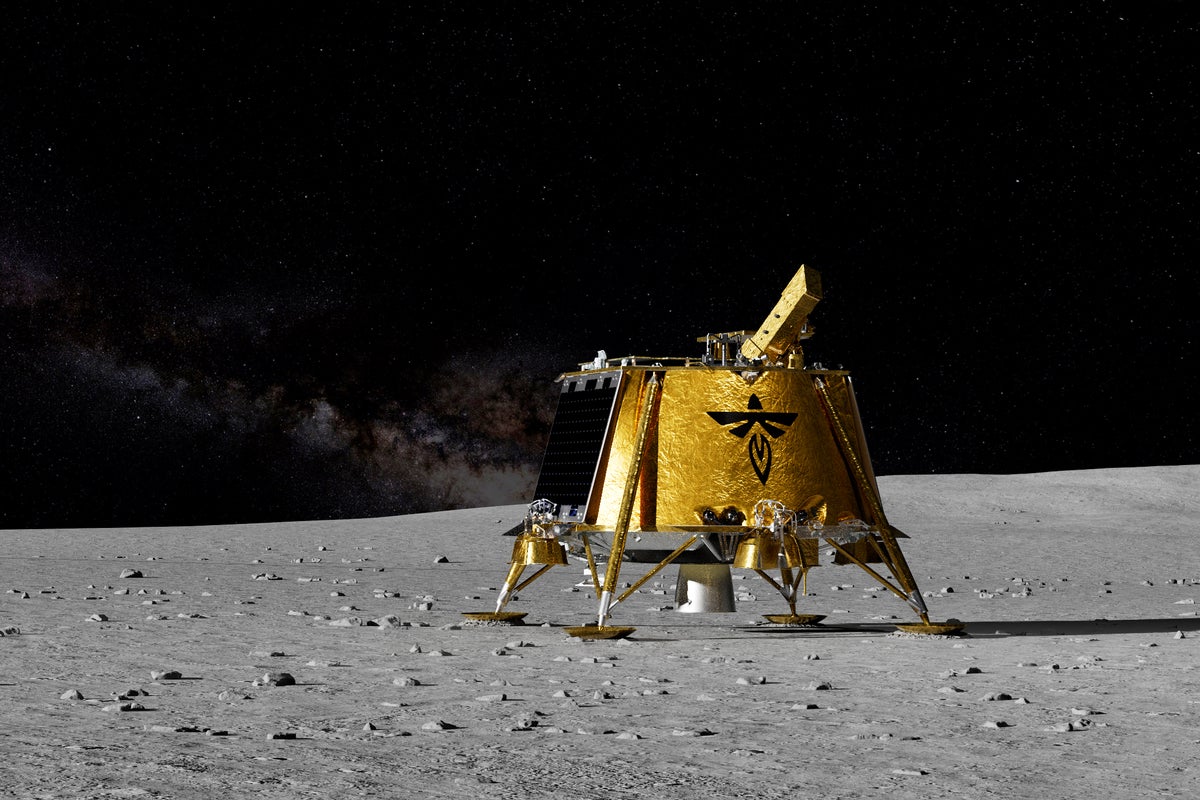Nature touts indigenous knowledge as coequal to “Western” (aka “modern”) science
One of the areas that Luana Maroja and I highlighted in our “Ideological Subversion of Biology” article, which analyzed six misguided statements about biology made in the service of ideology rather than scientific truth, was the last one: 6. Indigenous “ways of knowing” are equivalent to modern science and should be respected and taught as … Continue reading Nature touts indigenous knowledge as coequal to “Western” (aka “modern”) science

One of the areas that Luana Maroja and I highlighted in our “Ideological Subversion of Biology” article, which analyzed six misguided statements about biology made in the service of ideology rather than scientific truth, was the last one:
6. Indigenous “ways of knowing” are equivalent to modern science and should be respected and taught as such.
Now both of us believe that indigenous people do have and can produce knowledge, even though it’s usually of a restricted nature: trial-and-error truths limited to the geographic area that a group inhabits. But ideology, which has bought into the “authority of the sacred victim” mindset, has gone beyond that, as I’ve often written about New Zealand.
The assertions of adherents to this trope fall into several areas and share several characteristics:
a.) There are indigenous “ways of knowing” that are every bit as good as modern (they often say “Western”) science. These “knowledge acquisition methods” differ, but produce knowledge equally valid and important. (Note that the use of “Western” science is inaccurate, since science is now a worldwide endeavor. I will use “modern science” from now on.)
b.) The knowledge produced by indigenous “ways of knowing” has been ruthlessly suppressed by arrogant and bigoted Western scientists who think that their “way of knowing” is best.
c.) Indigenous knowledge is, in some cases, crucial in solving pressing problems for humanity. The most common example is global warming.
d.) Promoters of the value of indigenous ways of knowing usually adduce only a few examples to support their case.
All of these features are on display in a new article in the prestigious science journal Nature written by Oscar Allen, described as “a freelance writer in London,” though online information about him seems nearly nonexistent. You can read his article by clicking on the link below.
I’ll give some quotes demonstrating each of the four points above. Quotes from the article are indented; bold headings are mine, and the same as given above:
a.) There are indigenous “ways of knowing” that are every bit as good as modern (they often say “Western”) science. They are different, but produce knowledge just as solid.
. . . Indigenous and local communities hold unique insights that can enhance people’s shared understanding of the natural world and inform attempts to protect it. Recognizing this, scientists such as Cohall and Roué are working in partnership with Indigenous and local groups to preserve and amplify these insights, integrate them into their own research and co-produce fresh knowledge with these communities.
. . . . This loss continues today, in part because of the modern Westernized education system; “it might not directly suggest that you should not focus on Indigenous traditional practices,” Cohall says, “but it definitely emphasizes a different way of knowledge acquisition.” He also explains that urbanization has led more people to move to cities, away from the rural areas where they can experience nature and apply traditional practices
. . .other forms of Indigenous and local knowledge fit less easily into different epistemological systems. Often, ways of understanding the environment are formed through direct experience of nature and can be altered by when, where and in whom the knowledge exists.
“In our Western world, nature and culture are separated, and science pretends to be capable of giving knowledge without taking into account culture. Indigenous knowledge is more holistic,” says Roué.
A common claim is that because indigenous people live closer to nature than do “Western” scientists sequestered in their labs, they are more able to tell us things about nature. This is often part of the claim that indigenous people hold an important key to solving global warming. As for indigenous knowledge being more “holistic”, I’m not sure what that means.
. . .Most importantly, researchers should respect the equal value of Indigenous and local knowledge. Cohall says it is also formed through the same basic method as Western science: “Science is essentially making observations over a period of time and then drawing inferences.” The production of traditional knowledge is analogous, he says, but occurs in a less-controlled environment and is built up through generations of direct experiences with nature.
Neither method is necessarily better, but both can add to our understanding of the world,
I would take issue with all of these statements. “Equal value” is wrong; modern science, which progresses rapidly and on a worldwide basis, has improved human welfare (and not just local welfare) on a much broader scale and much more deeply. Indigenous knowledge is produced largely through observation and trial-and-error methods, and is often passed down via legends or word of mouth. Indigenous knowledge may draw inferences, but it lacks many of the tools of modern science that have made the latter far more effective: hypothesis testing, pervasive doubt and criticism, the use of statistics and mathematics, controlled experiments, and so on. Ask yourself: how much of your well-being derives from indigenous knowledge versus, say, the knowledge produced by science since the sixteenth century? And yes, I assert that the difference in methodology makes modern science better than indigenous ways of knowing.
b.) The knowledge produced by indigenous “ways of knowing” has been ruthlessly suppressed by arrogant and bigoted Western scientists who think that their “way of knowing” is best.
Similar dynamics have played out repeatedly over the past 500 years or more, as Western science has become imposed as the dominant knowledge system around most of the globe. In the process, many alternative ways of understanding the world have been marginalized. “There has been for a long time, and there is still, a distrust of Indigenous knowledge among scientists,” says Marie Roué, an environmental anthropologist at the French National Centre for Scientific Research in Paris. She says that Indigenous knowledge is often dismissed because it incorporates religious or spiritual elements. It also tends to be passed on orally and through cultural traditions, making it hard to formalize in the manner prized by the Western empirical method.
. . . Throughout history, various communities have settled, or been forced to settle, in the Caribbean. Each of these groups brought their traditions and culture and produced unique insights through their interactions with the natural environment. Sometimes the groups brought medicinal plants with them, which Cohall says might have happened with the periwinkle. But this knowledge has since been dismissed or suppressed. “A lot of those traditional Indigenous practices were pushed to the side because they were considered to be more primitive or not advanced or sophisticated, which led to a major loss of information,” Cohall says.
Here’s a bit from one of the two examples used: how the Sámi people find lichens to feed their reindeer. Modern scientists, it’s said, can’t abide the Sámi’s inability to say when or where lichens will appear every year because they are spotty, depending on weather:
Such thinking is, to some, infuriating. “I think that there’s an extraordinary arrogance that runs through many Euro-American knowledge systems,” says Luci Attala, a UK-based anthropologist and chair of the Tairona Heritage Trust, in Swansea, UK, which works to amplify the voices of the Indigenous Kogi people of northern Colombia. To her, researchers in the mainstream scientific establishment are culpable for the marginalization of Indigenous and local knowledge. “They’re part of the problem,” she says. “They’re part of the world that has spent years discounting other ways of being and assuming that their methodology is the one and only route to truth.”
Exploitation of indigenous knowledge is part of this theme, and we can’t deny that indigenous people have been exploited by modern scientists, as when their blood is taken for purposes other than what is said, or when animals and plants are removed from their environment without getting proper permission. That said:
. . . Reyes García is particularly sceptical about the premise of co-production, warning that it is often imposed and exploitative, rather than equitable. “Co-production is something that we scientists have invented because we are in big trouble; the environmental crisis, climate crisis, inequality crisis — we have messed up the world and we don’t know how to solve it,” she says. “And then we look at Indigenous people and see these people are actually managing well, so we think ‘Let’s just draw from their knowledge.’”
And here the ideological purpose behind distorting the value of indigenous knowledge becomes clear (my emphasis):
It is a critique that Roué is aware of. But she still feels that working towards better collaboration can help to place Indigenous and local knowledge in contexts that can convince industries and governments to make changes: “Our work begins by understanding and gathering knowledge, but it goes further and has also a political purpose — to empower Indigenous people.”
Empowering marginalized people is fine, but one has to know exactly what you’re trying to accomplish with a scientific project. Are you trying to find out things about the universe, or are you trying to empower marginalized people? These won’t always be the same, as we’ve learned from the money given to Māori in New Zealand to play whale songs and rub whale oil on kauri trees to save them from a parasite transmitted underground (see here and here). The Māori will be empowered (or rather, enriched), but no knowledge can possibly be gained, except the knowledge that following the dictates of ancient legends (the whale and kauri were created as “brothers”) is wrong.
c.) Indigenous knowledge is, in some cases, crucial in solving pressing problems for humanity. The most common example is global warming.
. . . The worsening climate and biodiversity crises are deeply affecting many Indigenous communities and other non-industrialized societies. These groups tend to be more reliant on and attuned to the health of the natural world, so their experience can provide valuable perspectives on environmental change.
This one again:
. . . “Co-production is something that we scientists have invented because we are in big trouble; the environmental crisis, climate crisis, inequality crisis — we have messed up the world and we don’t know how to solve it,” she says. “And then we look at Indigenous people and see these people are actually managing well, so we think ‘Let’s just draw from their knowledge.’”
Managing well? Then why does the article say this?
The worsening climate and biodiversity crises are deeply affecting many Indigenous communities and other non-industrialized societies.
While indigenous experience can tell us how climate changes over the short term can affect the local environment, let’s remember that the discovery of the phenomenon of global warming, the reason why it’s happening, and a lot of worldwide documentation of its effects (e.g., melting of sea ice) was determined by, yes, modern science. Solving the problem is not critically dependent on a fusion of indigenous knowledge and modern science.
d.) Promoters of the value of indigenous ways of knowing usually adduce only a few examples to support their case. The article gives only two examples, and neither is all that convincing.
The first involves the use of the Madagascar periwinkle around the world to treat diabetes and other maladies. Although the article notes that
Extracts from the flower are used as a remedy for eye infections in the Caribbean, where Damian Cohall, a Jamaican-born ethnopharmacologist at the University of the West Indies in Cave Hill, Barbados, learnt of it through interviews with elder members of local communities. Research in his laboratory identified compounds in the plant that inhibit an enzyme that regulates insulin levels and could lead to treatments for type 2 diabetes (see go.nature.com/3djmhyr). “The fact that these anti-diabetic properties are known in traditional practices validates the Indigenous science that existed well before Western knowledge systems,” Cohall says.
Well, we wouldn’t know if the drug really does have antidiabetic effects on people without a double-blind test, eminently possible here. Has such a test been done? Indeed, and it failed (see below). But this is the case for all of the many medicines derived from plants: there are reports that plants are useful (though some are not) in treating diseases, and then it’s given over to modern science to identify the relevant compounds and do the double-blind test to see if they work. In fact, Wikipedia says this about the Madagascar periwinkle:
It was not found to be anti-diabetic in double blinded controlled studies
Well, so much for Dr. Cohall . . . .
However, the isolation of periwinkle compounds turned up two: vincristine and vinblastine, that are still used in chemotherapy. The Wikipedia article says this about the flower: “Its use as an anti-tumor, anti-mutagenic agent is well documented in the ancient Ayurveda system of medicine and in the folk culture of Madagascar and Southern Africa.” So this is a good example of how indigenous knowledge can be turned into something really efficacious in modern medicine (I’m doubtful if they really cured cancer using the flower in indigenous cultures, and what are “mutagenic effects in ayurvedic medicine”????). But yes, if this is accurate, indigenous knowledge has led to knowledge that helps people worldwide.
The other example is that of the Sámi people, who live by herding reindeer. Those reindeer feed on lichen. The lichens are killed unless they are under snow, and the Sámi have a good idea about where lichen “pastures” can be found at different times. But this indigenous knowledge is said to be thwarted by arrogant forestry companies, who, as I said, get peeved with the variability in appearance of lichens.
Further, one bit of “co-production” of knowledge produced by combining modern science and Sami knowledge is bizarre:
Controlled burning is commonly used to manage forests around the world, but is not widely used by Swedish forestry companies. Although there is no evidence to suggest that the Sámi have traditionally used the technique, the idea that fire can benefit biodiversity is conserved in the Indigenous language. “There is a Sámi word, roavve, that means ‘a forest that has burnt in the past’ but also ‘a forest that is rich in lichen’,” says Roturier.
Lars Nutti, a Sámi reindeer herder from the Sirges community, recognized the significance of this linguistic artefact. “Roavve is a description of an old sparse forest with good grazing for reindeer,” he says, “but recreating such forests is largely impossible with today’s policies.” After an expanse of forest burnt down near where Nutti lives, he approached Roturier with the idea of running a research project to investigate whether dispersing lichen in this area would result in healthier pastures. “And the results actually showed that it worked very well, beyond our expectations,” says Roturier.
So here we have a potential improvement from one smart Sámi, but an improvement that doesn’t derive from indigenous Sámi knowledge. The ethnic group never did controlled burns. Rather, it came from modern knowledge: one Sámi realized that controlled burns have been used in other places to good effect—as a substitute for natural burns that no longer occur. It’s still not clear whether the Sámi will actually burn their forests to raise the titer of lichens, but this isn’t really a demonstration of indigenous knowledge; rather, it’s a potentially good idea derived from knowledge coming from modern conservationists.
And that’s it: the only two examples in the whole article. There is much palaver about the coequality of indigenous knowledge and science, but a dearth of examples of how they can work together to cause benefit the world.
This kind of hype is typical. It may be baffling if you haven’t encountered this species of article before, but realize that its main purpose is not to advance science but to advance people considered marginalized. When the author says this:
Most importantly, researchers should respect the equal value of Indigenous and local knowledge. . . Neither method is necessarily better, but both can add to our understanding of the world,
the proper response is “no they are not equal. Sure, indigenous knowledge can add to our understanding of the world, but modern science can add infinitely more.”
There’s a book to be written about all of this stuff, but I’m not going to write it, and no publisher in the world would touch it.
























_kYeMsh2.png?width=1920&height=1920&fit=bounds&quality=80&format=jpg&auto=webp#)





















































